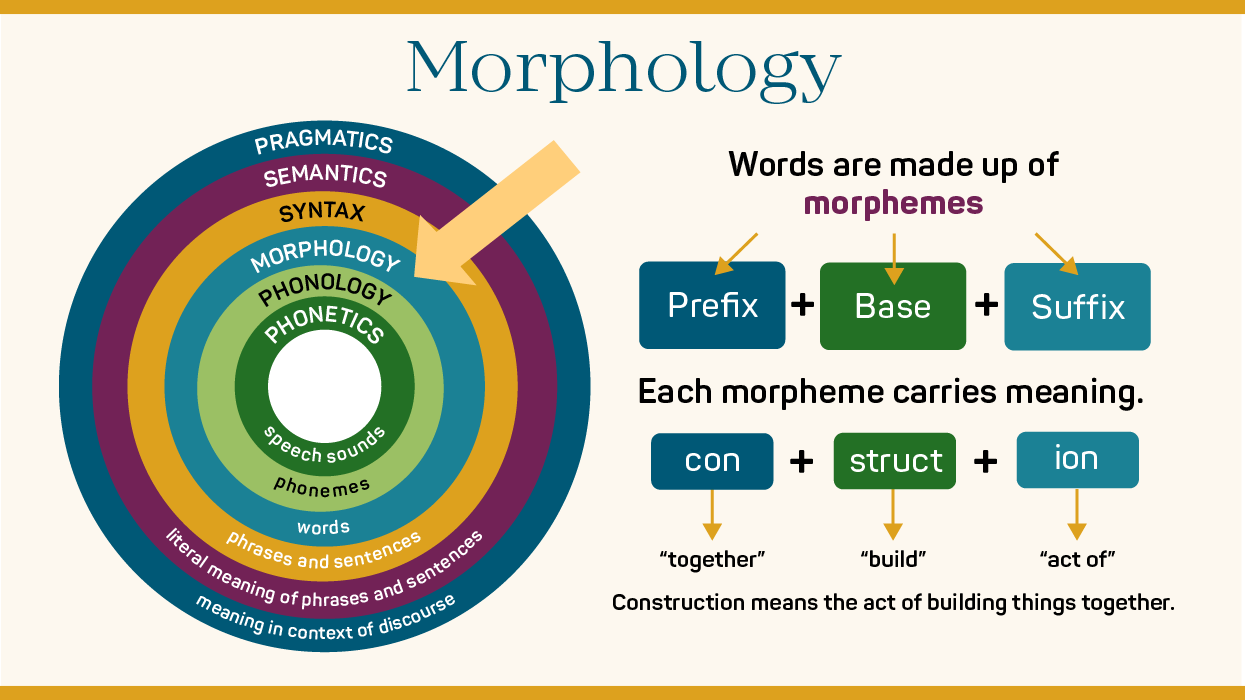
By Dr. Kristen Killian
English is a morphophonemic language. So, what is a morpheme? In linguistics, morphology is the principles by which words are formed and how they relate to one another within a language (Arnoff & Fudeman, 2022). We can teach morphology from the primary grades on.
Morphology instruction is supported throughout the research.
Scarsborough’s Reading Rope
The Simple View of Reading
The Active View of Reading
Four-Part Processing Model for Word Recognition
Importance of Teaching Morphology
Teaching morphology is crucial in literacy education because it helps students understand the structure and meaning of words, enhancing their reading comprehension and vocabulary skills. Here’s why it is important and what happens in the brain to make it useful:
- Improves Vocabulary: Understanding the root words, prefixes, and suffixes helps students deduce the meaning of unfamiliar words, expanding their vocabulary.
- Enhances Reading Comprehension: Morphological awareness allows students to break down complex words into manageable parts, making it easier to understand text.
- Supports Spelling Skills: Students can improve their spelling abilities by learning the patterns and structures of words.
- Promotes Critical Thinking: Analyzing word structures encourages students to think critically about language and its usage.
Let’s Practice
- A morpheme is the smallest part of a word that holds meaning.
- For example, in the word uncool, there are two morphemes, or two parts that hold meaning. (un-cool)
- Students need to explore the “meaningful parts” in acts of linguistic Lego.
- Let’s try out the word morphology. It has two bound morphemes (morph-ology).
- Morph cannot stand alone, making it a bound morpheme that means to change.
- Ology cannot stand alone, making it a bound form meaning the study of.
- Let’s try out the word preschool.
- Pre is a bound morpheme meaning before.
- School is a free morpheme because it can stand alone.
We can place morphology within a network of words.
What about a simple routine?
This routine is adapted from LETRS, Unit 4.
Pronounce the word. Have students pronounce the word.
Write the word to read.
Talk about syllables, morphemes, spelling, part of speech, and etymology.
Define the word using a student-friendly definition.
Say more about the word. Use it in different examples.
Ask students “yes” or “no” questions about the word’s meaning.
Elicit word use by students.
Morphology and Integration
Subject integration has numerous benefits in elementary education. It allows students to see connections between different subjects, promoting a holistic and interconnected understanding of the world. It also encourages creativity and critical thinking, as students are challenged to apply their knowledge across different subjects. Additionally, subject integration promotes collaboration and teamwork, as students work together to solve problems and complete interdisciplinary projects.

